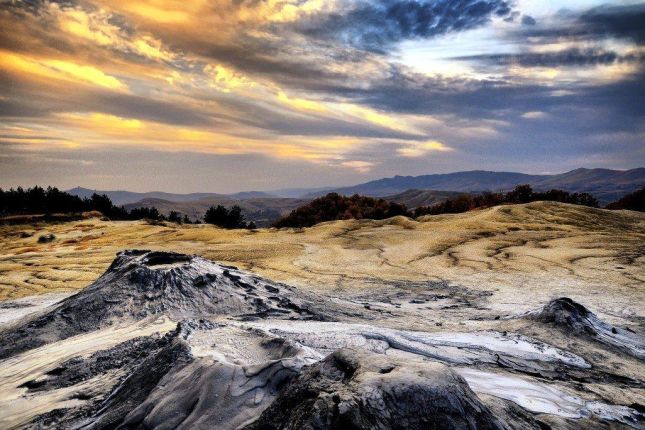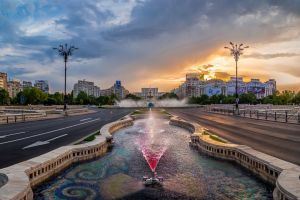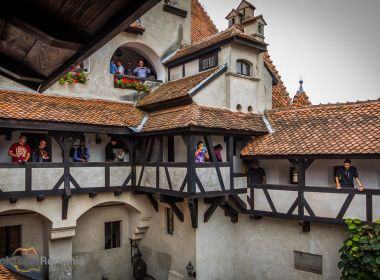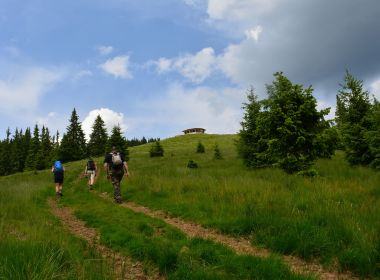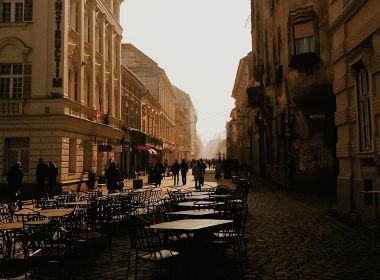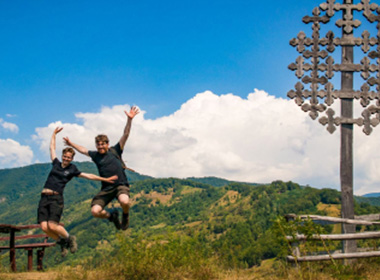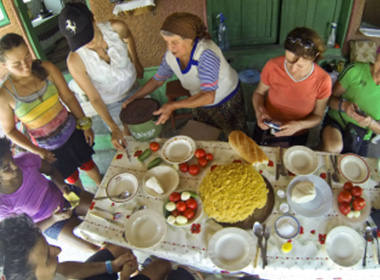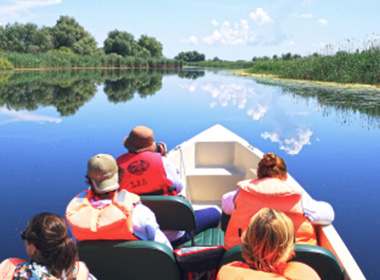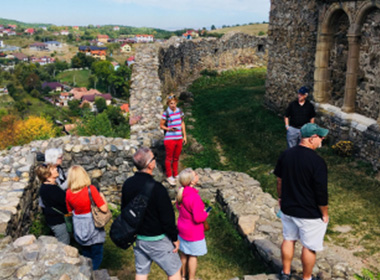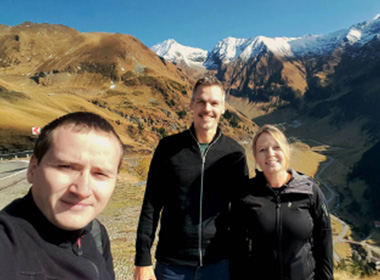Berca Muddy Volcanoes in Romania | Worth Visiting?
There are many options for day trips when traveling to Bucharest, Romania. But maybe the most unique of them all is a trip to the muddy volcanoes in Buzău County. More than just spectacular geological phenomenon, they are real volcanoes in the sense that they work, but just like lava flows from one type of volcano, these spit (as you probably guessed) - mud!
What are mud volcanoes?
The question of what is a mud volcano is a good one. But it's one thing to read about it - and another one to see them up close! That's why this lesser-known tourist attraction in Romania is worth considering on your holiday.
The Muddy Volcanoes are a natural reserve in Buzau County, a rare geological wonder hidden behind Buzau mountains part of the Eastern Carpathian Mountains in our country. The muddy volcanoes are spread across 30 hectares of land in the Berca and Scortoasa communes. They are accessible from the national road DN 10 (connecting Buzau County to Brasov) or Satuc village.
Attested since 1867, they were declared a natural monument in 1924 and became a UNESCO geopark in 2022, which secured them a spot on our list of things Romania is most famous for .
Other mud volcanoes in the world
This nature reserve is unique in Romania. However, similar phenomena can be witnessed all over the Earth in Yellowstone National Park, on the island of Trinidad, in South America in Venezuela and Columbia, and in Europe in Italy, Azerbaijan, Ukraine, and Russia, among other places.
A site more special than this would be the crater of a muddy volcano they discovered in the depths of the Barents Seas, at a 400-meter depth, where gas eruptions, along with water and other fluids.
It is impressive that this crater hosts a large community of underwater creatures, such as sponges, sea anemones, sea stars, corals, and tube worms, among other life forms.
In contrast, the muddy volcanoes on the surface of the earth are barren, similar to a small-scale lunar landscape. The vegetation that can grow in this soil is made up of rare species such as the feather grass (Obione verrucifera), the niter bush (Nitraria shoberi or gărdurarița in Romanian), dandelions, and other plants that thrive in the salty environment.
What makes the Berca mud volcanoes so unique?
Muddy volcanoes are a rare phenomenon in Europe, making Romania’s muddy volcanoes a spectacular sight and one of the fascinating reasons to visit Romania. The muddy volcanoes give the surrounding area a “lunar tone,” coupled with the lack of vegetation due to the presence of salts. The landscapes offer a unique, “out-of-this-world” impression and it is a geological and botanical reservation.
A selfie in this gray area, perhaps with the crater of a mud volcano in the background, will be a hit on your social media! :) This unique setting is also a preferred destination for family holidays in Romania.
The locals call the Berca Mud Volcanoes the “Gates of Hell,” you can expect to find two main locations, Little Mud Volcanoes and The Big Mud Volcanoes, located in Berca and Scortoasa communes.
Due to the rare phenomenon of the creation of muddy volcanoes (the presence of gas underneath), new volcanoes can emerge at any time while others disappear. Hence, the sight constantly changes, making each visit enjoyable.
They are not your regular volcanoes but rather large mud bubbles formed by the earth's natural gas erupting and leaving crater-shaped forms of thick clay-like mud or conical structures in the shape of a volcano.
Depending on the composition, namely how much water is in the mud, the formations are either small cones (Paclele Mari and Paclele Mici), which have less liquid, or lakes of boiling mud (the Beciu and Berca mud volcanoes), which have more liquid.
Planning a day at the Muddy Volcanoes, Romania
The one-day trip can take up to 4 hours of exploring nature at the main sites where the large mud volcanoes are located:
- Paclele Mari (the Big Mud Volcanoes)
- Paclele Mici (the Small Mud Volcanoes)
- Ferbatorile Beciu
- Berca.
Though paved, the road is not ideal and has many potholes. But an experienced Romanian driver will make it very accessible. Be careful when setting your navigation system because there are different routes to get there by car, bike, or on foot. There is a paid parking lot close to Pâclele Mici and a free parking lot further back.
You can top it off with an excellent dining experience in the surrounding areas to make an entire day of it before heading back to the city.
Visiting the Big Mud Volcanoes
When visiting Vulcanii Noroiosi, people usually start with Pâclele Mari. The most impressive thing about this site is how it resembles a lunar landscape.
Large mud volcanos are everywhere, and underground water and natural gases (mainly methane with 2% carbon dioxide) are found almost 3000 meters below the earth's surface. These gases cause the mud to bubble and spill over in a lava-like eruption with a small flow and form cones.
Visiting the Little Mud Volcanoes
As mentioned before, these are somewhat like real volcanoes, and their volcanic activity even resembles that of the magmatic volcanoes of Hawaii. To get to the Pâclele Mici, you only need to walk 20 minutes surrounded by small volcanoes and lakes of boiling mud.
8 kilometers away, you will find the mud volcanoes of Beciu, which resemble a bubbling mud pot. Each small crater boils incessantly, and tourists have the chance to see an eruption with their own eyes.
Due to the activity of gas from the depths, tons of mud are thrown like the water of hot springs into the air every few minutes, and this is the best place to see this phenomenon. If time allows, stop by to see the mud volcanoes of Berca as well. They are less active, and since many tourists put off this site and many skip it in the end, you could enjoy the place with less of a crowd, which is a real treat compared to other tourist attractions in Romania.
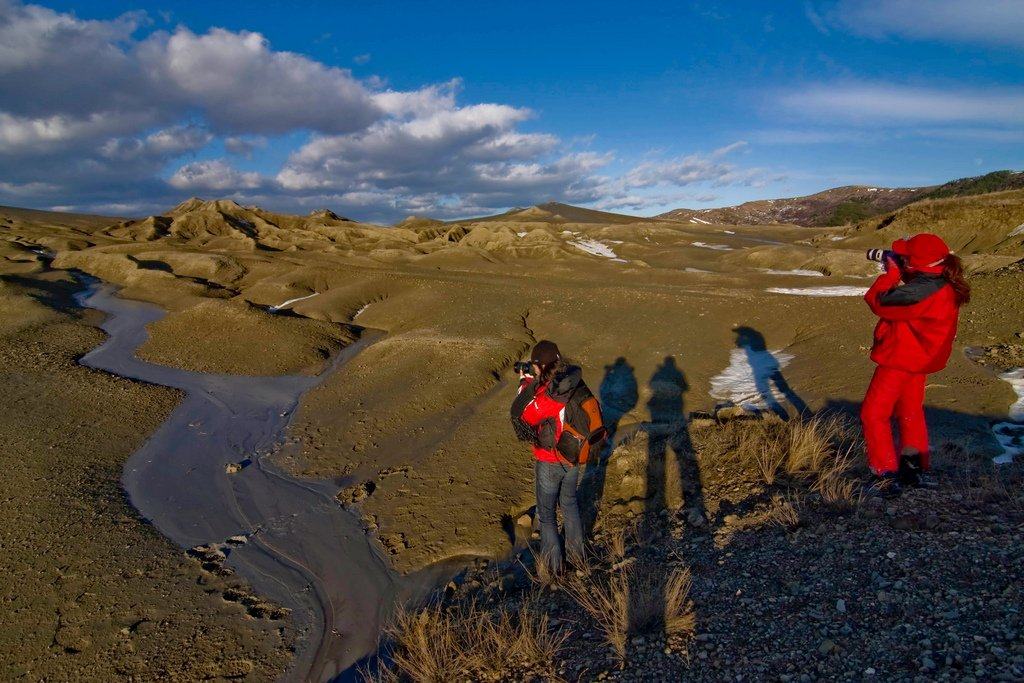
Local tip:The best time to visit would be a day without either rain or sun. For starters, if it rains, the reserve will be closed down anyway because you cannot walk on muddy, wet terrain. If it is too sunny, wear a lot of sunscreen and an outfit to protect you from the sun. Our guides will check the weather forecast before you go on a day trip with them.
Our guides will check the weather forecast before you go. Cloudy dry days are perfect. Avoid the noon and early afternoon hours, as there is no shade.
Never step in a muddy crater unless you want to return to the city barefoot. Your shoe will be sucked right off and you won't be able to retrieve it from the cold clay. This is also why we recommend laced mountain footwear that will allow you to walk around in this wild nature setting without slipping or getting stuck.
If you want to have a panoramic view of the area and its surroundings, Magura Odobesti is an excellent option. It is not at a high altitude, but enough to give you the needed perspective. Plus, it has a few plants, so it's a green surface, a great change from the "no - vegetation - surface of-the-moon-like" look of the area around the mud-spitting cones.
If you get hungry or tired after a long day of exploring, feel free to check out the tourist facilities in the Sarata Monteoru area.
- Local tip: About 15 km from the Muddy Volcanoes, you can also visit the oldest amber museum, which dates back 60 million years, hosted by the only amber museum in South Eastern Europe. The museum, considered to have the world's most famous amber color diversity, is located in an old traditional peasant's house in Colti village. In addition to exquisite amber, you can discover various rocks and types of soil, traditional clothes, sewing objects, and jewelry from different eras.
Places to visit
4 times a year we prepare a newsletter with local stories, places and our special insights about Romanian culture and local life that will inspire you to visit our country and have an authentic local experience. Would you like to get it?
